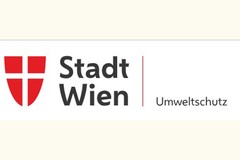Nature's helicopters
Dragonflies are true acrobats among insects, buzzing through the air at lightning speed. They are an important indicator of healthy biotopes, as their entire life cycle depends on the presence of clean water. The predatory larvae live underwater. Once they have completed their development, they climb on suitable leaves or branches and undergo a complete metamorphosis. During this process, the skin on the larva's back bursts open. An adult dragonfly hatches from it and soon takes its first flight. After mating, the eggs are also deposited in the water by the female dragonfly.
Endangerment
Unfortunately, dragonflies are endangered by the fragmentation, destruction and obstruction of aquatic habitats as well as by the pollution of water bodies by chemicals and pesticides. Especially in urban areas, habitat loss is becoming increasingly common. Near-natural bodies of water in urban areas therefore play an important role as refuges or stepping stones for these unique insects. Schönbrunn Zoo pays attention to creating habitats for the native dragonfly fauna when new facilities are constructed.
Native dragonfly species at the zoo
In 2022, Schönbrunn Zoo commissioned research into how many dragonfly species occur at the zoo and at the so-called Schwarze Lacke on the premises of the “Höhere Bundeslehr- und Forschungsanstalt für Gartenbau Schönbrunn”. The project was financially supported by the City of Vienna - Environmental Protection (MA 22). An impressive 26 dragonfly species were recorded in the zoo. That is around 42% of Vienna's dragonfly fauna. Of these 26 species, nine are classified as endangered according to the Austrian Red List. Among them is a real jewel - the Dainty damselfly (Coenagrion scitulum). This dragonfly species is even threatened by extinction in Austria. Dragonfly species with very different habitat requirements can be found at the zoo, reflecting the diverse range of aquatic habitats. The different design of the water bodies, adapted to the requirements of the zoo animals, therefore also promotes dragonfly diversity.
List of the dragonfly fauna at Schönbrunn:
Banded demoiselle (Calopteryx splendens)
Beautiful demoiselle (Calopteryx virgo)
Emerald damselfly (Lestes sponsa)
Willow emerald damselfly (Chalcolestes viridis)
Common winter damselfly (Sympecma fusca)
Blue-tailed damselfly (Ischnura elegans)
Azure damselfly (Coenagrion puella)
Variable damselfly (Coenagrion pulchellum)
Dainty damselfly (Coenagrion scitulum)
Small red-eyed damselfly (Erythromma viridulum)
White-legged damselfly (Platycnemis pennipes)
Large red damselfly (Pyrrhosoma nymphula)
Blue hawker (Aeshna cyanea)
Green-eyed hawker (Aeshna isoceles)
Emperor dragonfly (Anax imperator)
Lesser Emperor (Anax parthenope)
Hairy Dragonfly (Brachytron pratense)
Small pincertail (Onychogomphus forcipatus)
Downy emerald (Cordulia aenea)
Four-spotted chaser (Libellula quadrimaculata)
Broad-bodied chaser (Libellula depressa)
Black-tailed skimmer (Orthetrum cancellatum)
Keeled skimmer (Orthetrum coerulescens)
Ruddy darter (Sympetrum sanguineum)
Common darter (Sympetrum striolatum)
Vagrant darter (Sympetrum vulgatum)
Favorite spots at the zoo
Many dragonfly species are particularly attracted to bodies of water with naturally designed, well-structured banks and aquatic vegetation. This includes the waterfowl enclosure and the small bodies of water in the Africa enclosures. If you want to observe dragonflies, you should also take a look at the fountain in front of the administration building: The fascinating insects can be seen particularly well here.
Victoria Kargl, MSc (left) and Iris Fischer, MSc (right), dragonfly experts:
 “In summary, the species composition and the high proportion of both specialised and Red List species illustrate the great potential of the zoo’s water bodies. It is also clear to see that the habitats that have already been created are being accepted by dragonflies. We are very pleased that our recommendations for promoting dragonfly diversity will continue to be incorporated into the management of the zoo in the future.”
“In summary, the species composition and the high proportion of both specialised and Red List species illustrate the great potential of the zoo’s water bodies. It is also clear to see that the habitats that have already been created are being accepted by dragonflies. We are very pleased that our recommendations for promoting dragonfly diversity will continue to be incorporated into the management of the zoo in the future.”
Tips for the protection of dragonflies:
Dragonfly protection is water protection:
- Create small ponds, temporary pools or meres.
- Make the banks as natural as possible. Emersed vegetation such as reeds, sedges or rushes on the banks serves as a substrate for dragonflies, even on hard-built banks.
- Encourage aquatic vegetation such as milfoil or pond and water lilies. However, dragonflies also need open sections of bank between the overgrown areas.
- Avoid overstocking the water with fish.
- Avoid using pesticides or other substances which, in addition to killing insects, can also pollute water bodies.
A wild garden is an asset!
- A lawn looking like a golf turf, ‘weeds’ plucked down to the last detail and neat flowerbeds are not only costly, but also have a negative effect on biodiversity. Dragonflies need a near-natural environment around their waters. Hedgerows, flower-rich meadows and fallow land are all welcome. Many other insects that dragonflies feed on also live here. Give nature back a piece of your garden, and nature will give you many gifts in return.
With the kind support of the City of Vienna – Environmental Protection (MA22).

(Further informations in german only)
